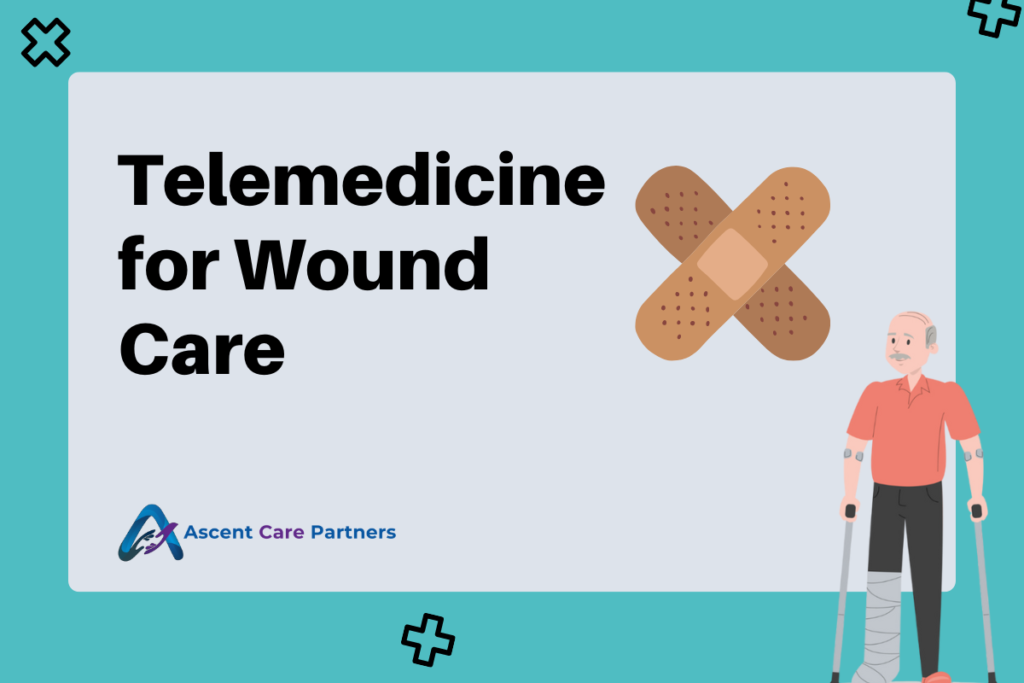As a result of the pandemic, additional health care options were needed, forcing a revolution in health care delivery. Recent world events have led to the rapid adoption of telemedicine for wound care. Telemedicine is also known as teleconsulting, telehealth, virtual visits, or TM.
Despite the fact that we refer to telemedicine as a revolution in patient care delivery, wound care telemedicine dates back to 1990. In recent years, wound care telemedicine has grown at an unprecedented rate. Telemedicine has improved wound care while reducing the risk of viral infections such as COVID19 among patients.
As a result of the refocus of medical professionals during COVID-19, wound care was greatly impacted. Patients feared entering hospitals and clinics. Wounds were not a priority to many. In addition, hospitals were short on staff and space, making receiving wound care more challenging.
Today, smartphones, computers, and video conferencing solutions provide high-quality images and videos that can be used for wound diagnosis and management. The rise of remote technology has naturally promoted wound care telemedicine. Twenty-six states require private insurers to reimburse healthcare providers for telemedicine services.
Telemedicine for virtual wound care
As wounds are visual, telemedicine has made it an effective method of treating them. It is possible to assess wound characteristics such as color, location, size, slough, granulation, necrosis, and pain through telemedicine. Patients’ wound histories can also be easily conveyed through a virtual visit.
Telemedicine benefits wound care
Additional benefits of wound care telemedicine include increased access to high-quality wound care.
In rural areas, board-certified wound experts are often scarce, so telemedicine provides patients with greater access to these important providers. In spite of not living in a rural area, patients can still take advantage of using telemedicine to avoid having to worry about transportation to and from wound clinics. Patients with limited mobility or transportation availability may especially benefit from this.
In addition to 24/7 access, telemedicine providers are also collectively available 24/7, which has greatly reduced the number of emergency room visits, especially from nursing homes.
In nursing homes where on-site physician coverage is not required, telehealth physicians can replace on-call physicians, allowing patients to receive a faster consult and possibly avoid hospitalization.
Cost-effectiveness of telehealth
In medicine, telemedicine is proving to be more cost-effective for both patients and healthcare providers.
Telemedicine reduced bed days and hospital admissions by 25% across all VA patients.
The use of telemedicine can also encourage patients to seek care earlier, thus preventing the need for more aggressive wound care in the future.
Chronic wound monitoring with telemedicine
Chronic wounds require frequent monitoring, and telemedicine provides the necessary frequency without overburdening patients. Telemedicine has proved to be a viable solution to address frequent wound check-ins. It is possible that telemedicine can also prevent amputations in chronic wound patients, but more research is needed.
Over the past two decades, telemedicine has been used to treat diabetic patients with positive results. Most of the studies showed that telemonitoring programs led to a higher rate of ulcer healing. Several other studies have shown a comparative outcome for chronic wound patients compared to those treated in clinics.
Telemedicine for wound care has some cons
While telemedicine has many benefits, it is not the ideal solution for all wounds. Telemedicine has several limitations, including treatment options.
To name a few, telemedicine is not useful for treating severe infections, sepsis, limb-threatening ischemia, or gangrene.
Virtual visits cannot be used to administer specialized wound procedures such as mechanical wound debridement, negative pressure wound therapy, and hyperbaric oxygen therapy.
Additionally, limited wound dressing supplies at home may cause patients to use unsatisfactory alternatives, complicating wound healing. Many patients may be unable to change their wound dressings alone.
Inadequate internet connections or outdated devices (phones, computers, video conferencing systems) can also lead to less reliable imagery or videos, impacting proper telemedicine diagnosis. Moreover, elderly patients may have difficulty adopting new technology without hands-on training.
Telemedicine’s Future
With advancements in remote monitoring and evolving hospital initiatives, telemedicine for wound care can overcome many of the current barriers.
Automated tracking of wound content using images from smartphones is also possible. Upon conversion to hue-saturation-value (HSV) space – comprising three colors: yellow, red and black – wounds can be analyzed by the imaging algorithm regarding their size and space, thereby allowing for observation of improving or worsening of healing. As smartphone technology advances further, more precise analyses in terms of wound depth will consequently become available.
Among other things, remote patient monitoring (RPM) will expand telemedicine and home care options. RPMs are digital devices or apps that monitor vital signs and health survey responses. RPM users are expected to increase by 28% by 2024. By 2027, the market for RPM systems will exceed $1.7 billion, an increase of nearly 128%.



